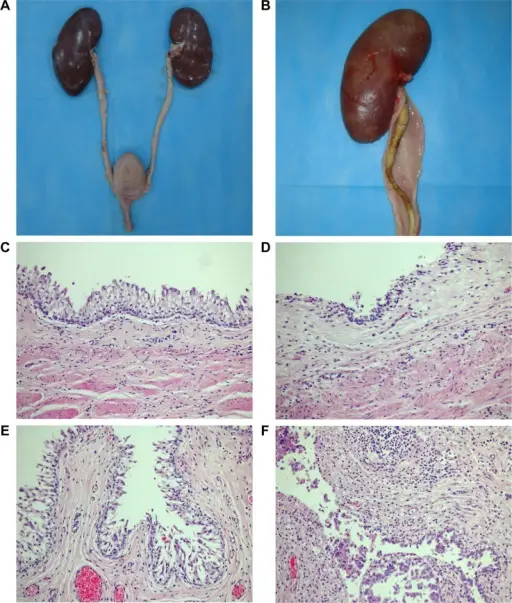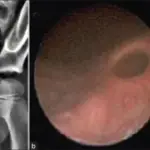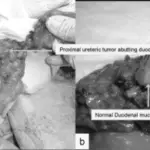Inflammation of the ureter is ureteritis.
Ureteritis is proliferative or reactive changes occurring in von Brunn nests which acquire luminal spaces, become cystically dilated (cystitis cystica), undergo glandular metaplasia (cystitis glandularis), or intestinal-type metaplasia.
What is the Pathology of Ureteritis?
The pathology of ureteritis is:
-Etiology: The cause of ureteritis is chronic irritation / local inflammatory insult.
-Genes involved: No genetic association.
-Pathogenesis: The sequence of events that lead to ureteritis involves the reactive process in response to chronic irritation, infection, calculi, outlet obstruction, catheterization. Urothelium proliferates and invaginates into underlying lamina propria.
-Morphology: The morphology associated with ureteritis shows multiple small submucosal cysts.
-Histology: The histology associated with ureteritis shows abundant urothelial von Brunn nests.
How does Ureteritis Present?
Patients with ureteritis typically affect males more than females and it can occur at any age. The symptoms, features, and clinical findings associated with ureteritis include the following. The majority are asymptomatic incidental findings. May infrequently cause recurrent urinary tract infections. Occasionally appears as a polypoid or papillary mass on cystoscopy. Cystitis glandularis can be associated with pelvic lipomatosis and bladder exstrophy.
How is Ureteritis Diagnosed?
Ureteritis is diagnosed by microscopic examination of resected tissue.
How is Ureteritis Treated?
Ureteritis is treated by the elimination of underlying sources of irritation. Antibiotic therapy is associated with chronic urinary tract infections. Occasionally surgical resection (transurethral) may be necessary.
What is the Prognosis of Ureteritis?
The prognosis of ureteritis is good. Reactive process without malignant potential. May regress if the cause of irritation is removed.



